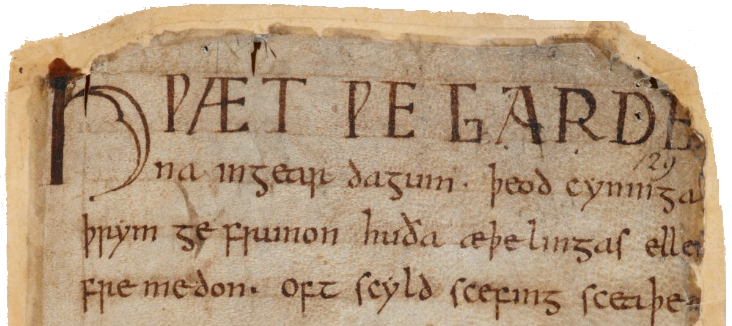
Contents: Beowulf-s | Data | Resources
Beowulf-s
Beowulf-s was ideated while reading Maria Dahvana Headley’s introduction to Beowulf: a New Translation (2020).
In her musings about the complications of translating, in particular of translating Beowulf situated among the myriad of Beowulf translations, Headley cites some biting criticisms leveled against others by fellow translator Chauncey B. Tinker in his 1903 The Translations of Beowulf: A Critical Bibliography.
Truly, there is something bewildering about how many translations this strange archaic bit of poetry has inspired, forming a unique corpus of texts struggling to express some vision of the archetypal story, like a wild game of “telephone” with the Old English past. Tinker’s Critical Bibliography is a monument to this endeavour, curating a list of impactful translations in various languages and providing introduction, extracts, and criticism (culminating, of course, with his own 1902 translation).
Headley’s introduction also mentions the transformation of access, how by following a hyperlink, anyone can now view the surviving Beowulf manuscript once poured over by only a select elite of scholars. She says: “not only is the original accessible to anyone with an internet connection, so are a huge number of translations and volumes of evolving scholarship, many long out of print. This translation exists because of that access” (see excerpt).
Struck by the thought of that access, and amused by the wit of Tinker, it occurred to me that the Critical Bibliography represented a handy curated public domain list of other public domain texts–a text that could be transformed into a collection of translations–another transformation of access.
Chauncey B. Tinker, The Translations of Beowulf: A Critical Bibliography
(New York: Henry Holt and Company, 1903)
Project Gutenberg
Internet Archive
Hathitrust
Data
Tinker’s work is well structured with each entry containing a repeating set of descriptive sections.
Utilizing formatting cues in the text such as section headers and spacing patterns, the beowulf-s project parsed Tinker’s content into tabular data with OpenRefine.
The results were refined and enhanced, including adding links to digitized editions of the works.
This data drives the website forming a browseable digital collection from the original book’s text and can downloaded from the Data page.
Future work on the project will add texts and aggregate data formats from the cited works (timeline = someday).
Resources
Beowulf has also inspired a large number of digital projects. Here is a few resources:
- Wikipedia List of Translations of Beowulf
- MS Cotton Vitellius A.xv, British Library (digitized manuscript which contains Beowulf, starts at page f.132r)
- Electronic Beowulf 4.0, Kevin Kiernan, Emil Iacob, 2014
- Beowulf: Some Resources for Study, Roy M. Liuzza, 2016
- Beowulf (in Old English), Internet Medieval Sourcebook, Fordham University
- Old English Online, resources to learn Old English
